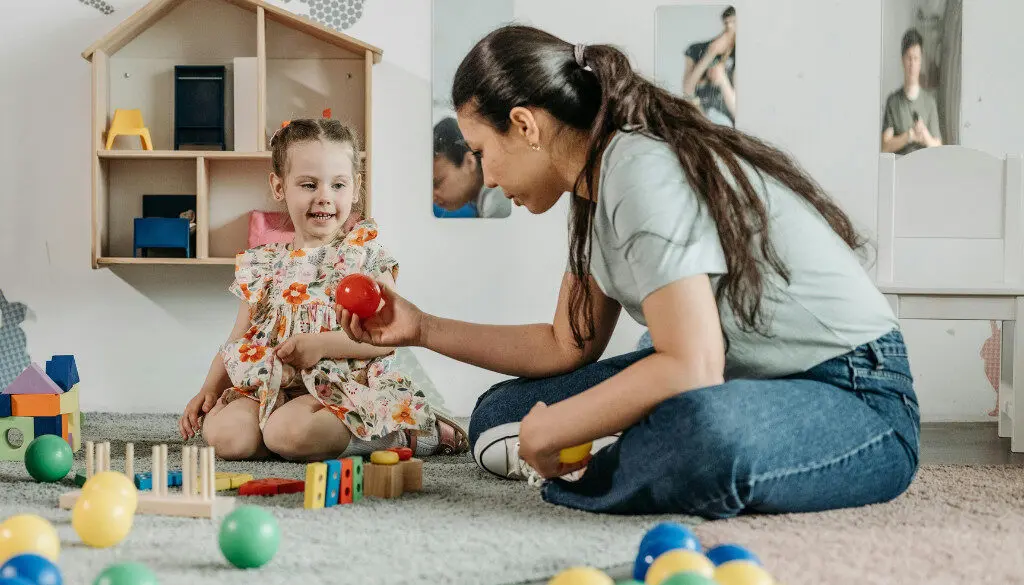In today’s fast world, being a mindful and engaged parent is tough. Work, family, and social life keep us busy. It’s easy to forget what’s most important: our kids.

Using positive parenting can help you stay close to your child. Simple strategies can make your home a nurturing place. This lets your child grow and succeed.
This article will show why being present with your child matters. It will also give you tips to do it every day. This will strengthen your bond and make your relationship more loving.
What Is Present Parenting? The Art of Being Fully Engaged
Present parenting means being fully with your child. It’s about creating a caring space for their growth. It’s all about being in the moment, without distractions.
Being present is more than just being there. It’s about being emotionally ready to connect. The Difference Between Physical and Emotional Presence is key to understanding present parenting.
Build Connection One Moment at a Time
Being a present parent means showing up in both the big and small moments. Start with these daily habits to be a more present mom, and practice positive parenting techniques that foster long-term trust and emotional security. You can also reduce distractions with this quick 2-minute mom hack for a cleaner home to free up time for the moments that matter.
The Difference Between Physical and Emotional Presence
Being physically present means you’re in the same spot as your child. But emotional presence is about being fully attentive and responsive. A parent can be there in body but not in spirit if they’re caught up in work or screens.
- Physical presence is about being there in body.
- Emotional presence is about being there in spirit and attention.
- Both are essential for a strong parent-child connection.
How Present Parenting Shapes Child Development
Present parenting greatly influences a child’s growth. When parents are fully engaged, kids feel valued and understood. This builds their sense of security and self-worth.
Studies reveal that kids with engaged parents do better emotionally and academically. They also have better social skills.

The Science Behind Parent-Child Connection
The bond between parents and children is based on attachment theory. It shows how the quality of this relationship affects a child’s attachment style and future relationships.
Research links a strong, secure attachment to positive outcomes. These include better emotional control, resilience, and social skills.
- A secure attachment is built on trust and responsiveness.
- Consistent presence helps children develop emotional stability.
- A strong parent-child connection is foundational for healthy development.
Why Being Present Matters in Today’s Distracted World
In today’s world, being always connected can distract us a lot. Present parenting stands out as very valuable. It’s key to understand how distractions affect our kids and the good of being fully there.
The Impact of Technology on Family Dynamics
Technology has changed how we live and interact. But, it can deeply affect family bonds, making us feel disconnected. When parents are too busy with screens, kids might feel left out or unloved, hurting their feelings.

Long-term Benefits for Children’s Emotional Health
Being with our kids has big benefits for their emotional health. It helps them grow strong emotionally, understand feelings, and form good relationships. Conscious parenting like listening and validating feelings is crucial for emotional smarts.
Building Trust Through Consistent Presence
Being there for our kids builds trust. When they feel we’re always there, they feel safe and share more. This trust is vital for a strong bond and is a key parenting tip for good outcomes.
By focusing on being present and reducing distractions, we can strengthen our connection with our kids. This makes our family life better and improves everyone’s happiness.
Recognizing the Barriers to Present Parenting
Getting to present parenting is tough because of many obstacles. In today’s fast world, being fully there for our kids takes more than just wanting to. It needs a real effort to beat the challenges.
Work-Life Balance Challenges for Modern Parents
One big hurdle is finding a balance between work and family. Many parents find it hard to mix work duties with family needs. This often means less quality time with kids. Flexible work arrangements and clear boundaries between work and family can help.
Digital Distractions and Information Overload
The digital world brings many distractions that can get in the way of present parenting. Things like constant alerts, social media, and the need to stay updated can make it hard to focus on kids. Taking digital detox breaks and making tech-free areas can lessen these distractions.
Mental Load and Parental Burnout Prevention
The mental load of parenting, like managing home tasks and emotions, can cause burnout. Parents need to watch for burnout signs and act early. This means self-care, asking for help, and doing things that make us feel good.
By facing these barriers, parents can start being more mindful and positive. It’s about choosing to be fully present and engaged, even when it’s hard.
Creating Daily Rituals for Meaningful Connection
Daily rituals are a great way to bond with your child. They help create lasting memories and a deeper connection. These routines give your child a sense of security and stability.
Morning Routines That Foster Connection
Starting the day right can strengthen your bond with your child. A good morning routine can make the day more connected and understanding.
- Begin with a gentle wake-up, such as opening the curtains or a soft call.
- Share a nutritious breakfast together, discussing the day’s plans.
- Establish a simple morning exercise or stretching routine to get everyone moving.
Dinner Time Strategies for Family Bonding
Dinner is a great time to bond with your family. A few simple steps can make mealtime special.
- Turn off all electronic devices to minimize distractions.
- Encourage each family member to share their day’s highlights.
- Make mealtime interactive by involving children in cooking or setting the table.
Bedtime Rituals That Strengthen Relationships
Bedtime rituals can be calming and intimate. They provide a sense of calm and security.
- Establish a consistent bedtime story or reading routine.
- Engage in relaxing activities together, such as gentle stretches or deep breathing.
- Have a heartfelt conversation about the day’s events or tomorrow’s plans.
Adding these daily rituals to your routine can improve your bond with your child. The most important thing is to be consistent and present during these moments.
Mindful Listening: The Heart of Present Parenting
Mindful listening is key to good parenting. It helps parents and kids connect deeply. Dr. Laura Markham, a clinical psychologist, said, “When we listen mindfully to our children, we show them they’re important and their feelings count.”
How to Truly Hear What Your Child Is Saying
Listening to your child is more than hearing words. It’s about understanding their feelings and needs. Give them your full attention, don’t interrupt, and keep eye contact. This makes a safe space for them to share freely.
“Listening is not just waiting for your turn to speak; it’s about being fully present for the other person.” This quote shows what mindful listening in parenting is all about.
Reading Non-verbal Cues and Body Language
Children often talk through body language and facial expressions. Paying attention to these can tell you a lot about how they feel. For example, a child might say they’re okay but show signs of being upset.
- Pay attention to changes in tone of voice.
- Notice if their body language aligns with their words.
- Be patient and give them space to open up.
Validating Feelings Without Rushing to Fix Problems
One hard part of mindful listening is not rushing to solve problems. Instead, focus on validating your child’s feelings. Acknowledge their emotions and show empathy. This makes them feel understood and supported, not ignored.
“Validation is not about agreeing or disagreeing; it’s about recognizing and accepting your child’s feelings as valid.”
By listening mindfully, parents can build a stronger bond with their kids. This helps kids develop emotional intelligence and self-awareness. It creates a more positive and supportive family atmosphere.
Quality Over Quantity: Making Limited Time Count
The time we spend with our kids is more important than how much time we have. It shapes their growth in big ways. As parents get busier, it’s key to use our time well for a strong bond with our kids.
The Power of Undivided Attention in Brief Moments
Even a few minutes of our full attention can mean a lot to our kids. Putting away distractions like phones lets us connect deeply. This makes our moments together more meaningful.
Try talking with your child during dinner instead of checking your phone. Ask questions that let them share their thoughts. This can make your bond stronger and help them learn to communicate better.
Child-Led Play and Its Benefits for Connection
Letting your child lead in play is a great way to use your time. It shows them their ideas matter. This not only strengthens your bond but also helps them grow.
Play can be simple, like building with blocks or going for a walk. Just be there, fully present, and enjoy the moment together.
Creating Memorable Moments in Everyday Life
Creating lasting memories with your child doesn’t need to be big or take a lot of time. Simple, everyday moments can become special with the right mindset.
For example, make bedtime special by reading a story or having a relaxing bath. These brief moments can become treasured memories for both of you.
By focusing on quality time with our kids, we build a deeper connection. Conscious parenting means being fully present and making every moment count.
Digital Detox: Setting Boundaries for the Whole Family
Screens are everywhere, making it key to have tech-free zones and times. This helps with positive parenting and present parenting. Finding a balance between screen time and real-life interactions is vital.
Creating Tech-Free Zones and Times in Your Home
Setting up tech-free areas or times boosts family bonding. For example, making dinner tables or bedrooms screen-free can lead to better conversations and sleep. A “no screens at meals” rule can make dining more enjoyable.
Try setting aside device-free hours or days. A weekly “tech-free Sunday” can be great for outdoor fun, board games, or other activities without screens.
Modeling Healthy Technology Use as Parents
Parents are key in showing kids how to use technology wisely. By using screens responsibly and doing activities without them, parents set a good example. It’s important to be mindful of your screen time when your kids are around.
- Be aware of your screen time and limit it when with your children.
- Engage in hobbies or activities that don’t involve technology.
- Use technology together as a family to promote bonding, such as watching a movie together or playing educational games.
Age-Appropriate Screen Time Guidelines
Setting screen time limits based on age is crucial. The American Academy of Pediatrics suggests no screen time for kids under 2, except for video chatting. For kids aged 2 to 5, limit it to 1 hour of educational content.
- For children under 2: No screen time except for video chatting.
- For children aged 2-5: Limit screen time to 1 hour of high-quality educational content.
- For children aged 6 and older: Place consistent limits on screen time, making sure it does not interfere with physical activity, sleep, and other activities.
By following these tips, families can have a healthier tech relationship. This leads to a more present and connected family life.
Practicing Mindfulness as a Parenting Tool
Mindfulness is a powerful tool for parents. It helps build deeper connections and understanding. It makes parenting easier and creates a more loving family environment.
Simple Mindfulness Exercises for Overwhelmed Parents
Mindfulness is easy and doesn’t take much time. Simple activities like deep breathing or walking mindfully can help. They keep parents calm and focused, especially when things get tough.
For example, just a few minutes of deep breathing each day can lower stress. This simple act helps parents respond thoughtfully, even in tough moments.
Teaching Mindfulness to Children of Different Ages
Teaching mindfulness to kids depends on their age. Younger kids enjoy simple games that keep them in the moment. Older kids can try guided meditations or mindful movement.
Make mindfulness fun for kids. Turn everyday activities like eating or walking into mindfulness exercises. Doing it together as a family strengthens bonds and makes it enjoyable.
Responding vs. Reacting in Challenging Parenting Moments
Mindfulness helps parents respond wisely, not react impulsively. It lets them pause and choose a better, kinder way to handle things.
This mindful parenting leads to better outcomes. It teaches kids how to manage their emotions and handle tough situations. It shows them the value of patience and compassion.
By using mindfulness, parents can be more intentional and caring. This improves their relationship with their kids and makes home a more peaceful place.
Balancing Self-Care and Present Parenting
In the world of parenting, taking care of yourself is not selfish. It’s a must for being a good parent. It’s easy to forget about our own well-being when we’re busy raising kids. But, forgetting self-care can make us burn out, making it hard to be there for our kids when they need us.
Why Your Well-being Is Essential for Effective Parenting
Being a parent is tough, both physically and emotionally. When we’re well-rested and happy, we’re better at being patient and understanding. A healthy parent can handle parenting’s stresses better, making self-care important for the whole family.
- Improves mental health and resilience
- Enhances patience and understanding
- Sets a positive example for children about self-care
Remember, “You can’t pour from an empty cup.” Taking care of ourselves means we have the emotional strength to be there for our kids.
“The most important thing you can do for your children is to take care of yourself.”
Setting Realistic Expectations and Healthy Boundaries
One key to balancing self-care and parenting is setting realistic goals. Understanding we can’t do everything is key. By focusing on what’s most important, we can manage our time and energy better.
- Identify your priorities as a parent
- Learn to say “no” to non-essential commitments
- Establish a routine that includes self-care
Finding Support Systems and Parenting Community
No parent is alone. Building a support network of family, friends, and other parents is vital. It gives us emotional support, practical help, and a sense of community.
- Join parenting groups or clubs
- Attend community events
- Utilize online forums and resources
By balancing self-care with parenting, we improve our well-being and create a better environment for our kids to grow.
The Lasting Legacy of Being There When It Matters
Being a present parent is a powerful way to leave a lasting mark on your child’s life. By being fully present, you build a strong bond with your child. This bond is crucial for their growth and happiness.
Creating daily rituals, listening mindfully, and setting tech limits are key strategies. These actions help you stay close to your child. They also strengthen your bond and create cherished memories.
The benefits of present parenting are vast. Children who feel seen and heard grow up emotionally strong and confident. They also develop better social skills. Being there for your child helps them build a solid foundation for a fulfilling life.
Remember, every moment is precious in parenting. By focusing on present parenting and nurturing your bond, you create a lasting legacy. This legacy will positively impact your child for many years.






